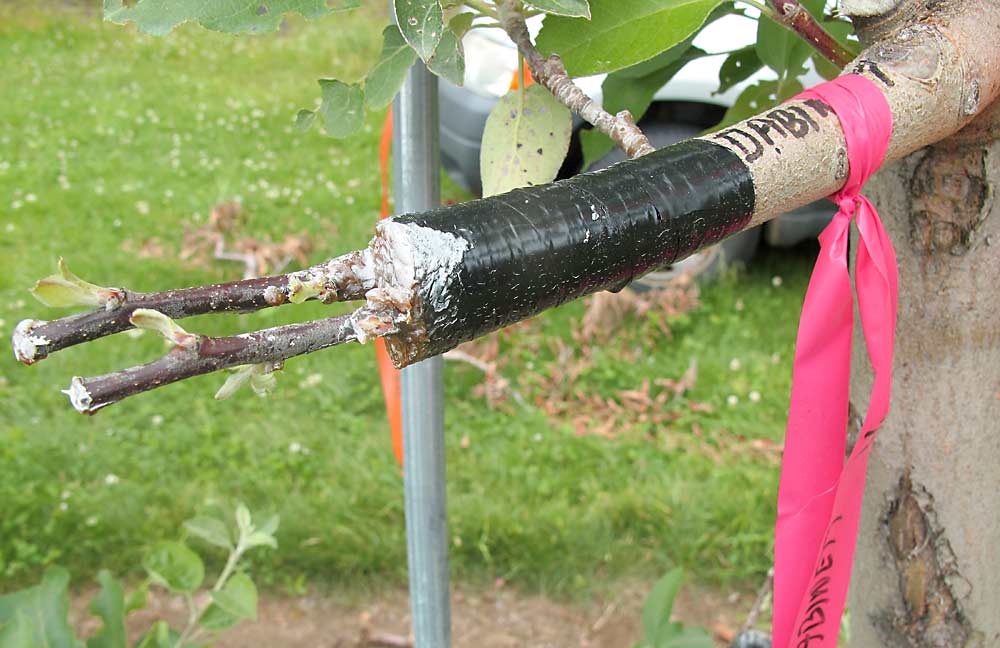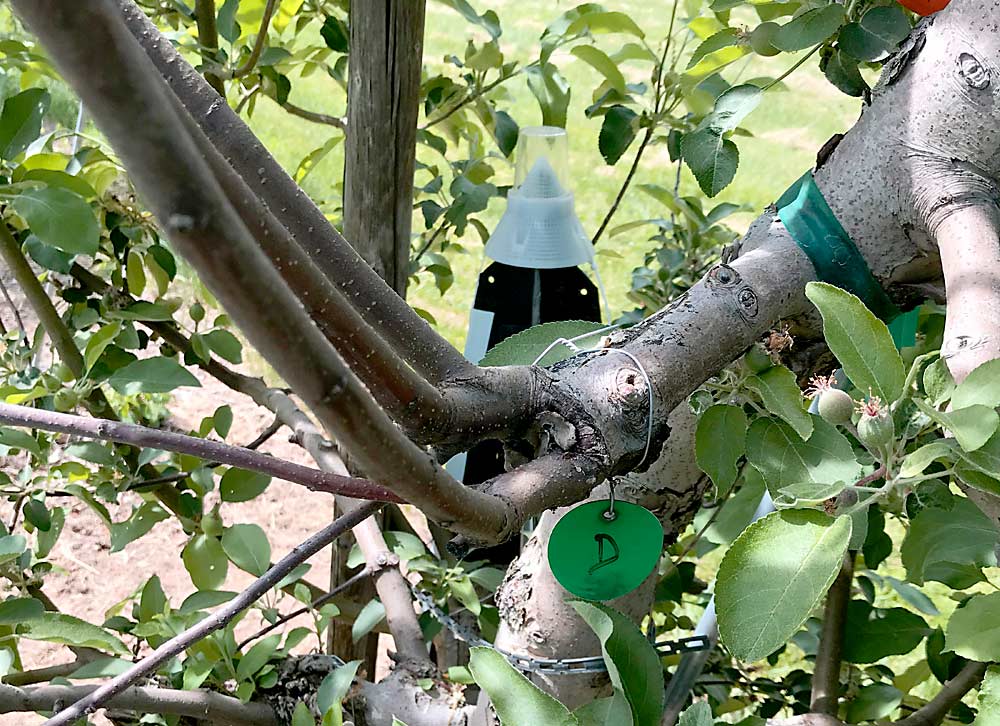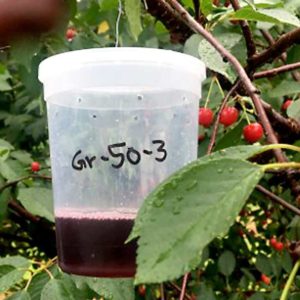
Luring insect pests from a cash crop such as apples, and keeping them away, is the goal of every attract-and-kill pest management system. Ideally, the system would lure multiple pests simultaneously, would do so every year in a simple and inexpensive manner and would improve pest monitoring.
Jaime Piñero, a professor and entomologist with the University of Massachusetts Amherst and leader of the UMass Extension Fruit Program, devised an intriguing pest attraction method that might fit that ideal: Graft multiple cultivars known to be attractive to insect pests onto a handful of apple trees on the orchard perimeter, and use them as perennial trap trees.
Piñero came up with the idea during a conversation with New Hampshire grower Steve Wood in spring 2018. Wood has experimented with various attract-and-kill methods in his orchard over the past few decades, enough to know that most methods are commercially unworkable. What he really wants: a combination of affordable attractants that work on multiple pests.
Both Piñero and Wood knew that certain apple varieties attract more pests than others. Apple maggot fly (Rhagoletis pomonella) is drawn to Red Astrachan, for example, and plum curculio (Conotrachelus nenuphar) tends to gather on Ginger Gold. So, why not graft those and other alluring cultivars onto a single tree and create a perennial trap tree (or “bomb tree,” as Wood calls it) for multiple pests?
Wood immediately saw the potential. Like other attract-and-kill strategies, the grafting method, if successful, would allow him to spray a handful of trap trees on the perimeter instead of the entire orchard block, but would do so in an affordable and workable manner. He agreed to try it in a 10-acre block at his New Hampshire orchard.
“Some of us are pretty excited about the prospect of the results of years of research finally becoming commercially applicable,” Wood said.
Not long after Piñero’s conversation with Wood, research technician James Krupa started grafting trees at the UMass Cold Spring Orchard in Belchertown, and Piñero started contacting other growers to see if they were willing to try the technique. He knew it would take a few years for the research project to get definitive results, so he wanted to start right away. He received nearly $500,000 from the U.S. Department of Agriculture’s National Institute of Food and Agriculture and the Massachusetts Society for Promoting Agriculture to help pay for the project.
Anna Wallingford, an entomology specialist with University of New Hampshire Cooperative Extension who’s working with Piñero on the project, said the multigrafted tree approach could lead to serious reductions in insecticide use and would have important implications for integrated pest management programs.
The method Piñero devised is to graft six cultivars (Dabinett, Ginger Gold, Liberty, Red Astrachan, Wickson, Yellow Transparent) known to be attractive to insect pests onto a single apple tree. (They used McIntosh as a control whenever possible.) These grafted trees are spaced every 30 meters or so around the orchard perimeter, roughly four trees to an acre. By spring 2020, 10 orchards in Massachusetts, two in New Hampshire and one in Maine had created more than 100 of these trap trees, and Piñero is encouraging more growers to participate in the project.

Results so far show that the grafted trees may be more attractive to some insect pests than nongrafted trees. Ginger Gold, for example, attracted higher levels of tarnished plant bug (Lygus lineolaris) and plum curculio in 2020. But multiple years of research under multiple levels of pest pressure are needed before firm conclusions can be drawn, Piñero said. He also wants to see how well the trees work in combination with commercial lures.
Massachusetts grower Ben Clark has about 10 of the trap trees in a test block, grafted three years ago. It’s still too soon to know how well they will work, he said, but he hopes they will help him keep his pesticide sprays on the perimeter.
Piñero said certified organic apple growers might find the multigrafted tree technique to be especially helpful for pest management. He said organic control of plum curculio in New England is a “nightmare,” so he tried the trap tree approach in a small certified organic UMass block and also found an orchardist in New Hampshire, Mike Madden, willing to try it out.
Madden has five groups of trap trees spaced around his 4-acre, certified organic U-pick orchard. Each group of trap trees is composed of two plum trees (to attract the curculio) and an apple tree. He’s already grafted Pristine and Redfree scions onto the apple trap trees, varieties he hopes are attractive to pests. He was planning to graft the recommended scions from Piñero onto the same trees. Madden hopes the grafted trees will augment his organic pest management program.
“I’ll take all the help I can get,” he said.
—by Matt Milkovich







Leave A Comment